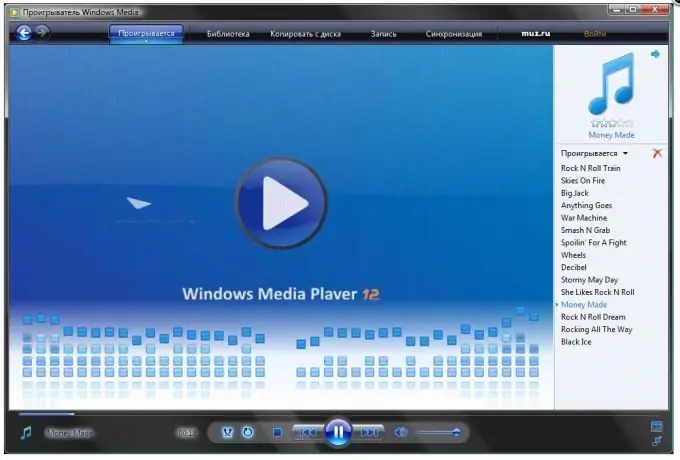Each owner of a personal computer has a lot of videos and albums with music on the hard disk, which require a player to view and listen to. One of the most popular is Windows Media Player, which can play almost all known media formats. You can download the player from the official website of Microsoft. New versions of the media player offer users even more options - both a new interface and the ability to directly download music from online music stores.

To install Windows Media Player correctly, you must close all active programs. This is not just a warning to avoid all kinds of conflicts between software. The thing is that a number of Microsoft applications, for example, the Internet Explorer browser, use some of the player's components in their work. For correct and complete installation, they must be inactive, including the previous version of Windows Media Player. To do this, you need to make sure that there is no icon corresponding to the program in the system tray. It is best to go to the "Toolbox" and uncheck the box next to "Windows Media Player".
In order to install Windows Media Player yourself, you need to go to the folder with the saved distribution and double-click on the installer icon (as a rule, this is a file named MP8Setup.exe, where MP stands for Media Player, and the number stands for the version number).
In the first installation window that appears, the program detects whether there are active programs and will offer to close them. By clicking the "Next" button, information with the License Agreement will appear, which the user must read and accept the terms of the agreement. To do this, click the "I Accept" button.
In the new window to set privacy settings, it is recommended that you uncheck the boxes next to “Obtain licenses automatically for protected content” and “Send unique player code to content providers”. It is also recommended that you uncheck the box next to "Keep log of files and addresses in the player", as this information may be available to other users of the computer. After making your choice, click the "Next" button again.
The installer will prompt you to select Windows Media Player as your primary MP3 player. If users have other players, then on the "File types" tab, uncheck the "MP3 audio files" box. Thus, Windows Media Player will not pretend to play them without the user's permission.
In the next tab "Additional features" it is proposed to place the player icon on the desktop or on the quick launch bar. Depending on your preferences, you can either uncheck the corresponding labels, or leave. By clicking on the "Finish" button, the installer will exit. When you start Windows Media Player for the first time, it will search your computer for media files and add them to the collection.






